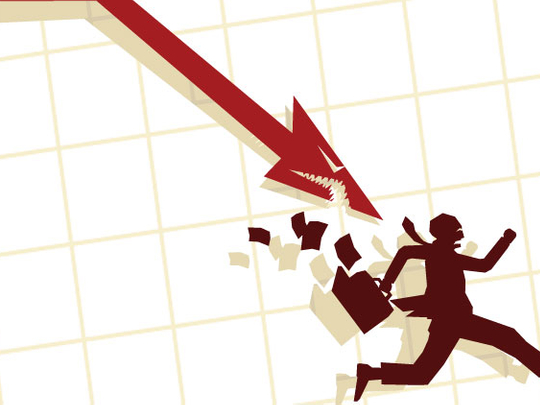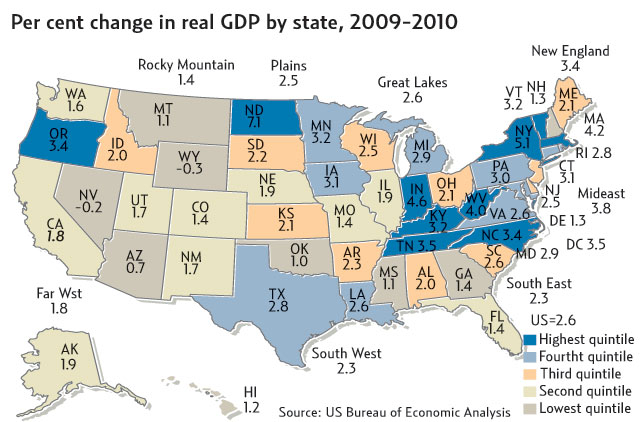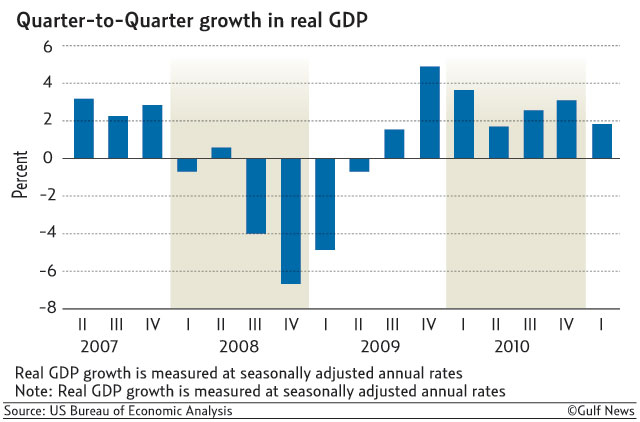
A large formal oil portrait of the 38th President of the United States oversees the ladies of West Michigan as they play their hands at their regular Tuesday afternoon Bridge session at the Kent County Golf and Country Club.
From his pride of place over the mantel, Gerald R. Ford silently stands sentinel over the coiffed matriarchs as they play their hands in the formal room that bears his name. For years, these ladies have played every Tuesday, some occupying the seat of their mother before them.
Outside the neat neo-colonial clubhouse on a hill that overlooks the rolling fairways and greens and the city of Grand Rapids, there are few playing the course — save for the occasional interlopers that duff around the furthermost holes out of sight and reach of the groundskeepers. This, the second-largest city of Michigan, is known as the Furniture Capital of America — the valley and river and deep forests perfect for the moving of lumber and the making of fine cabinetry.
It was here that flouride was first introduced to any US city's water supply, ensuring the residents would have good teeth and fine smiles
But few are smiling here now -- nor anywhere else in the US. Not since Gerald R. Ford oversaw the nation from his place in the Oval Office has the US economy been in such a state of stagnation.
In the room next to those ladies of Kent County playing cards, the business people of West Michigan regularly gather, trying to shuffle the deck on the economy, playing a hand few have had to deal with before.
Lag in job creation
Unemployment remains stubbornly high — the US economy needs to generate 125,000 new jobs every month just to keep pace with population growth. In May, 429,000 more people looked for state unemployment benefits, with the overall federal jobless rate growing to 9.1 per cent. Thankfully, the businessmen in the anteroom of Kent County Golf and Country Club aren't in this depressing demographic — but they are owners of businesses who are feeling the pinch of an economy failing to revive. For them, unravelling the reasons why the US economy is failing to recover is as complex and as nuanced as the Bridge game underway in the adjacent Gerald R. Ford room.
"Recessions caused by a banking crisis are very different from recessions caused by inventory imbalances or stock market crashes," notes Tim Schad, President of Nucraft furniture and a member of the board of directors at the Mercantile Bank of West Michigan. With his slightly ruffled hair and easy-going demeanour, Schad could as easily pass for a temporarily addled academic as he does for a business owner employing 200 making high-end office furniture, a bank director and a former president of Grand Valley State University.
"As a business person — and as a bank director — involved with many companies, I am very conscious that the US economy is a collection of many distinct individual markets," Schad notes. "And even within these individual markets there are subsets that can behave very differently."
In his own field of furniture, for example, Schad notes that the overall furniture market is stagnant in the US, with office and residential sector sales depressed. But public seating for places like stadiums, churches and performing arts centres remains strong as planned projects are nearing completion.
"In the automobile industry, sales are rebounding as the pent-up demand for new cars brings credit worthy customers to the market," he says. "The total sales level remains below the pre-recession level when auto loans were easily available to almost all consumers."
And in the banking sector, there's an equally nuanced separation of growth areas.
"In the banking industry, banks are responding to the demands of bank regulators to increase their capital levels, become more profitable and avoid high risk loans," he notes. "This means that although banks have more money available than the last two years, they will not lend it except to very credit-worthy customers."
Consequently, there are fewer loans to individuals and corporations for real estate — which regulators consider high risk — and the loans that are available require high down payments and more guarantees.
"Loans to corporations for equipment purchases or working capital — which regulators consider low risk — are easily available, but demand for these loans is low because most companies have significant cash on their balance sheets," Schad says.
"And loans to individuals for anything — autos, boats, education or credit card debt — require higher credit scores and or larger down payments."
Schad says there is an increased level of distrust that smaller companies have for the banking industry. During the recession, just when small companies needed their banker, the banks were cutting companies off from new loans and cancelling existing loans.
"This is one of the reasons companies are building up the cash on their balance sheets and borrowing less — they are concerned the banks will not support them if they need them in the future," Schad told Gulf News.
Adding to the confusion is the fact that government speaks with two voices regarding banks.
"Politicians and economists talk about the need for banks to begin lending again to help the economy," he says. "But bank regulators are focused on bank solvency and reducing risks in the industry — which means higher capital levels and fewer high-risk loans."
And significantly, Schad sees the depressed real estate market as being a new factor in the US economy failing to rebound.
"In the real estate markets, we suffer from over-building in the years of ‘easy money' leading up to the recession," he says.
Scahd notes that there are more homes than qualified home buyers, more strip mall storefronts than profitable retail stores, more office space than employed office workers and more manufacturing plants than profitable manufacturers.
"Unfortunately, this excess real estate does not go away easily," Schad says. "The owners, which can be individuals or banks, are not willing to tear it down. Rather, they either hold it waiting for prices to firm or, when forced, sell it for whatever they can get — often a 30 to 50 per cent discount from prior values."
In most markets, the cost of new construction exceeds the current depressed price of existing real estate, and it will be many years before supply and demand are back into balance in the real estate markets.
"Only then will the construction industry begin to hire again," Schad says, adding that as an industry, it provided jobs for five per cent of the US work force before the recession. Today, construction employment is 5.5 million, down two million jobs from pre-recession levels in 2007.
Not a typical recession
"The severe economic recession we are experiencing in the US, Europe and other parts of the world is not your typical supply-demand imbalance which takes 12-18 months to get back in balance," James Brooks, the chairman of Brooks Capital Management in Grand Rapids, told Gulf News.
He believes the recession is driven by several macro-economic forces. These, according to Brooks, include a new economic order in which countries like China, India and Brazil offer low cost labour, low operating costs and some offer access to natural resources that have resulted in many jobs moving from the Midwest US to China and India, with capital being agnostic and moving to its most efficient place.
"American population demographics are changing rapidly," he says. "Second World War baby boomers are ageing and moving beyond peak spending that normally tops out when people are in their late 40s and early 50s. The generation immediately following boomers is much smaller. Demographers have been warning for more than a decade that this shift in age and spending patterns was likely to create a dramatic and prolonged recession all by itself that would begin between 2009 and 2010 and take more than a decade to regain previous performance peaks."
Lastly, Brooks believes that the US and Europe pursued low interest policies and lax lending standards for the better part of two decades, creating huge bubbles in residential and commercial real estate as well as certain investment assets.
"When the bubble burst in 2007, the US stock market dropped over 50 per cent and real estate values dropped dramatically," he says. "Many real estate assets are worth less than the outstanding mortgages on them. Most middle class families in the US have had their net worth wiped out or greatly diminished. Scared by high unemployment, many of these families did not remain invested in equities and have not benefited from the run up in values since.
"So middle class America is scared and saving at the highest rates in decades, even though they receive nothing in interest. They are deleveraging and paying down their debt. This is causing further softening of consumer consumption, which has historically represented 65 to 70 per cent of US GDP."
The US is still one of the top three business environments in the world, according to Carol Sanchez, a professor of management and director of international business at the Seidman College of Business at Grand Valley State University.
"It still makes sense to start and grow business here," Sanchez says. "Business may be reluctant to invest much now because demand is low or slow, and because of deadlock in Washington over lawmakers fighting about the debt ceiling. I would guess that most business, large and small, know we must raise the debt ceiling. It's a political game of chicken. Profitable companies are hoarding cash, not investing, and some may be speculating instead. Competition for business within the US is a board game: what Michigan gains because of ‘better' incentives, Illinois loses."
Recovery unpredictable
So how long does she see this lasting?
"If I could answer that I would be richer than Oprah and worth more than Facebook," Sanchez laughs, adding that it terms of consumer confidence: "If you have a job, it's strong and cautious. If you don't, it's low."
That a sentiment echoed by Schad.
"Consumers who have a job are gaining confidence as overtime and bonuses return," he says. "Those without a job are losing confidence. People who have been out of work for more than a year are unlikely to be interviewed, much less hired.
"Businesses are gaining confidence as their productivity, profitability and cash balances improve," he says. "Even if final demand in the US is weak, businesses are finding ways to improve profits.
And the increasing standard of living in developing countries offers new expansion opportunities to US companies that have experience serving such consumers."
Rob Sligh, owner of Grand Rapids-based Sligh Furniture, says he believes there is a temptation now for a return to protectionism in the US economy.
"It's clear to economists that free-trade, the free movement of people, goods and capital creates the most value for the most people in the US and in the world," Sligh says.
"Overall, I feel optimistic about the US economy," he adds. "It usually takes a crisis to get the US or any culture motivated to make big changes. We have our motivation now. One of the great strengths of American people individually and collectively is that once we make our mind up to make some big changes, we make those changes quickly compared to many more tradition-bound cultures."
Schad believes that the best way out of the current stagnation is balancing the federal budget and slowly reducing government debt while the economy gradually begins to improve.
"This will take decades," Schad says. "My preference for balancing the federal budget is restructuring the tax code to eliminate all tax deductions while providing some reduction in tax rates to yield a small but meaningful increase in total tax revenue. Simultaneously, I would like to see some smart reductions in spending.
"My fear is that an inability to balance the federal budget will lead to high interest rates and high inflation. This would crush the unemployed and minimum wage workers leading to even greater income disparities in the US."
Innovation the key
Brooks believes that the present economic conditions are likely to persist for at least another decade, with some ups and downs during that period and with very little real economic growth overall — "unless there is honest confrontation of our irresponsible behaviour combined with major widespread innovation," he says.
"We owned a family soft drink business for three generations. It started in my grandfather's basement and 65 years later employed thousands of people with hundreds of millions of revenue. The path to success and prosperity was not a smooth straight line. At times we had our business strategies in the groove and our sales and profits grew nicely. But eventually our competitors changed their behaviour or some external event occurred which disrupted our business model and our revenues and profits began to decline," Brooks said.
"When this happened, we could not just cost-cut and job-cut our way to renewed prosperity. We had to focus on that which was mission critical, greatly reduce or eliminate the nice to haves and then invest in innovation that re-established our competitive product and service value proposition," Brooks says.
"It is no different for cities, states and nations... The only path to renewed prosperity for the US will be through genuine innovation — businesses, government and institutions working together as interactive and interdependent systems networks to deliver superior competitive value to a rapidly changing world. Only then will our revenues and jobs begin to grow in a sustainable manner."
In the Gerald R. Ford room, some of the coiffed matriarchs of the Kent County Golf and Country Bridge Club finally come up with a winning strategy. In the anteroom, it's going to take a little longer.














